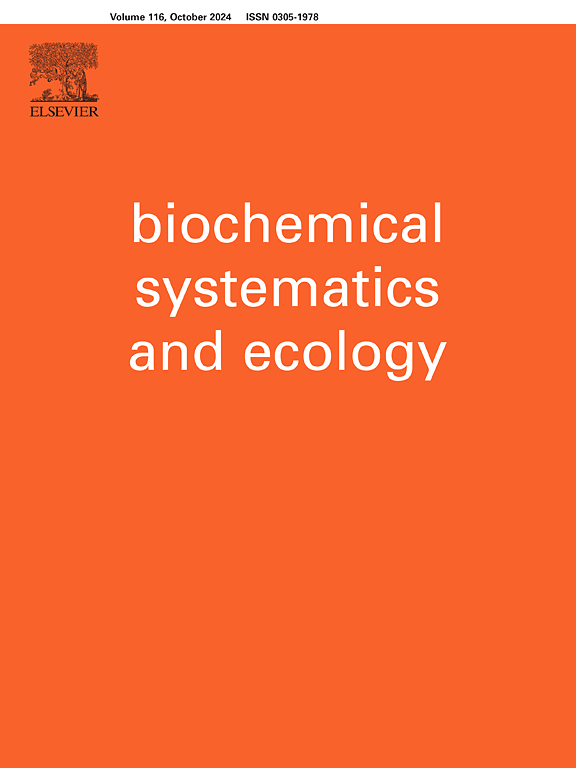Stilbenes from Gnetum leptostacyum Blume and their chemotaxonomic importance
IF 1.4
4区 生物学
Q4 BIOCHEMISTRY & MOLECULAR BIOLOGY
引用次数: 0
Abstract
Gnetum leptostachyum Blume is a woody climber whose fruit is consumed as food by local communities. In current study, G. leptostachyum was phytochemically studied for the first time, leading to the isolation of seven stilbenes namely resveratrol (1), isorhapontigenin (2), gnemonoside M (3), gnetin C (4), gnetin J (5), gnetin E (6), and gnemonol B (7). The chemotaxonomic significance of these compounds was explored through a combination of experimental findings and literature analysis. Notably, compounds like gnetin C and gnetin E are widely distributed across the Gnetum genus, suggesting their potential as chemical markers for the genus and supporting the classification of G. leptostachyum within it. In contrast, other compounds with more restricted distributions may serve as unique markers for distinguishing specific Gnetum species. This study not only presents the first full account of G. leptostachyum's chemical constituents but also provides critical data that contribute to the chemotaxonomic framework of the Gnetum genus, enhancing the understanding of species identification and classification within this group.
求助全文
约1分钟内获得全文
求助全文
来源期刊

Biochemical Systematics and Ecology
生物-进化生物学
CiteScore
3.00
自引率
12.50%
发文量
147
审稿时长
43 days
期刊介绍:
Biochemical Systematics and Ecology is devoted to the publication of original papers and reviews, both submitted and invited, in two subject areas: I) the application of biochemistry to problems relating to systematic biology of organisms (biochemical systematics); II) the role of biochemistry in interactions between organisms or between an organism and its environment (biochemical ecology).
In the Biochemical Systematics subject area, comparative studies of the distribution of (secondary) metabolites within a wider taxon (e.g. genus or family) are welcome. Comparative studies, encompassing multiple accessions of each of the taxa within their distribution are particularly encouraged. Welcome are also studies combining classical chemosystematic studies (such as comparative HPLC-MS or GC-MS investigations) with (macro-) molecular phylogenetic studies. Studies that involve the comparative use of compounds to help differentiate among species such as adulterants or substitutes that illustrate the applied use of chemosystematics are welcome. In contrast, studies solely employing macromolecular phylogenetic techniques (gene sequences, RAPD studies etc.) will be considered out of scope. Discouraged are manuscripts that report known or new compounds from a single source taxon without addressing a systematic hypothesis. Also considered out of scope are studies using outdated and hard to reproduce macromolecular techniques such as RAPDs in combination with standard chemosystematic techniques such as GC-FID and GC-MS.
 求助内容:
求助内容: 应助结果提醒方式:
应助结果提醒方式:


